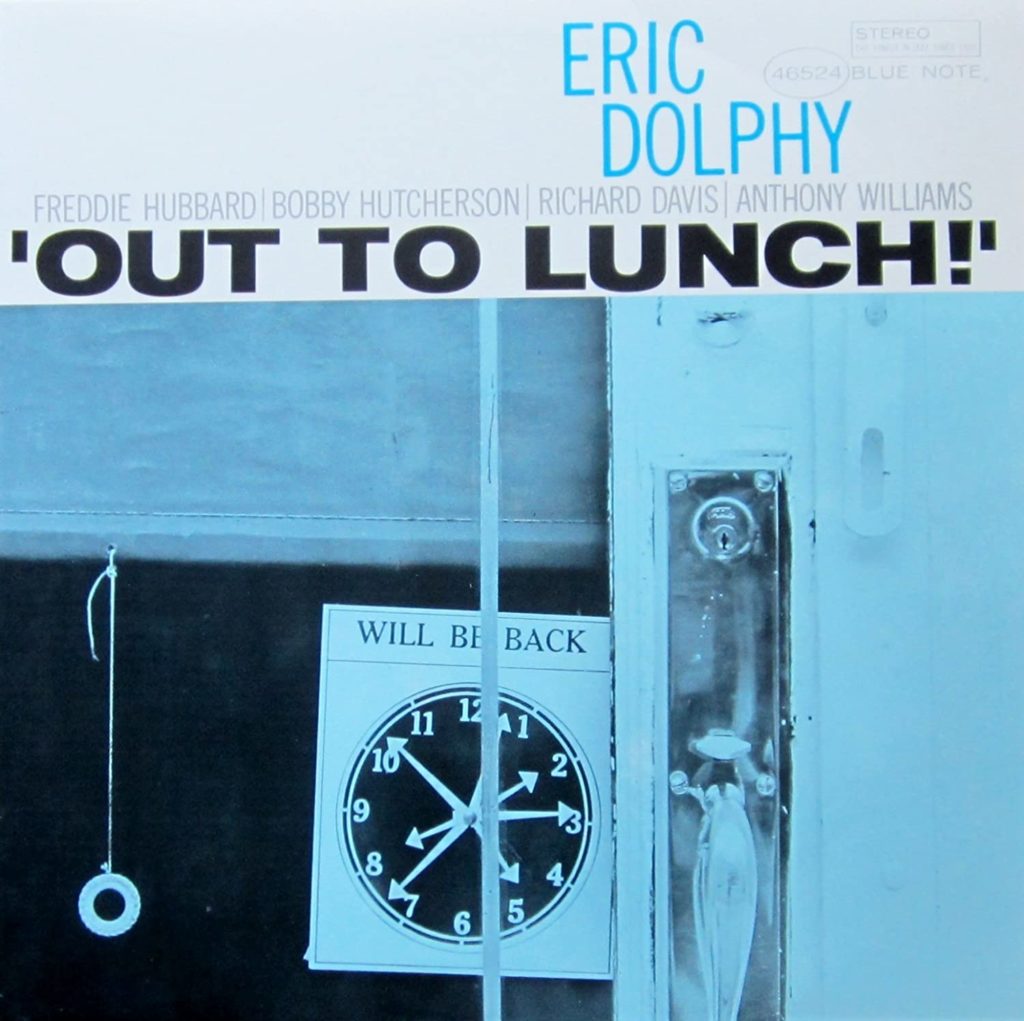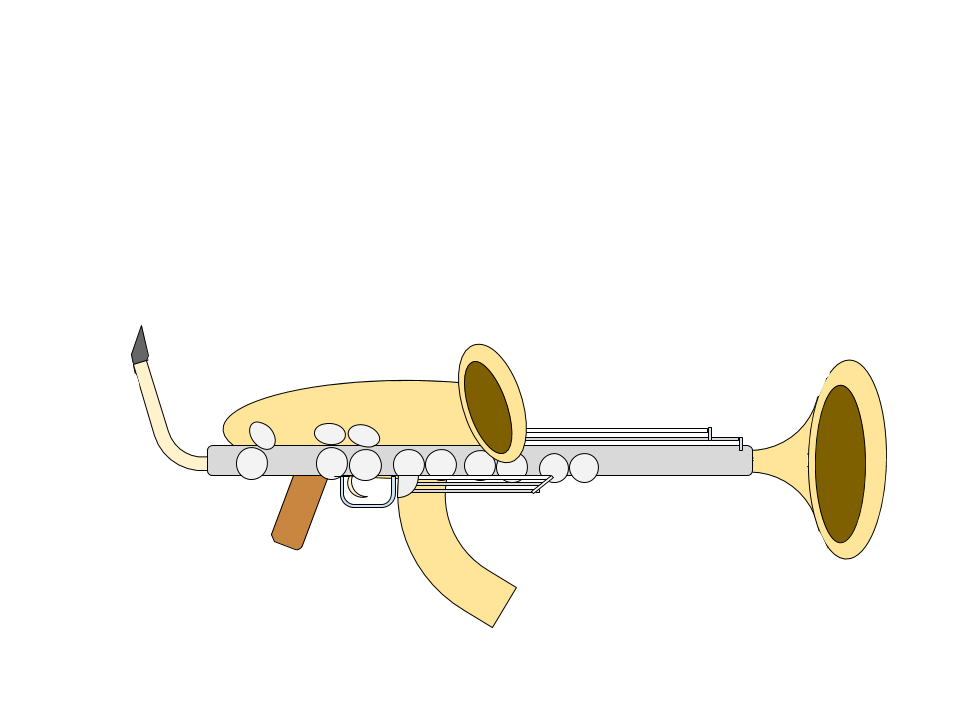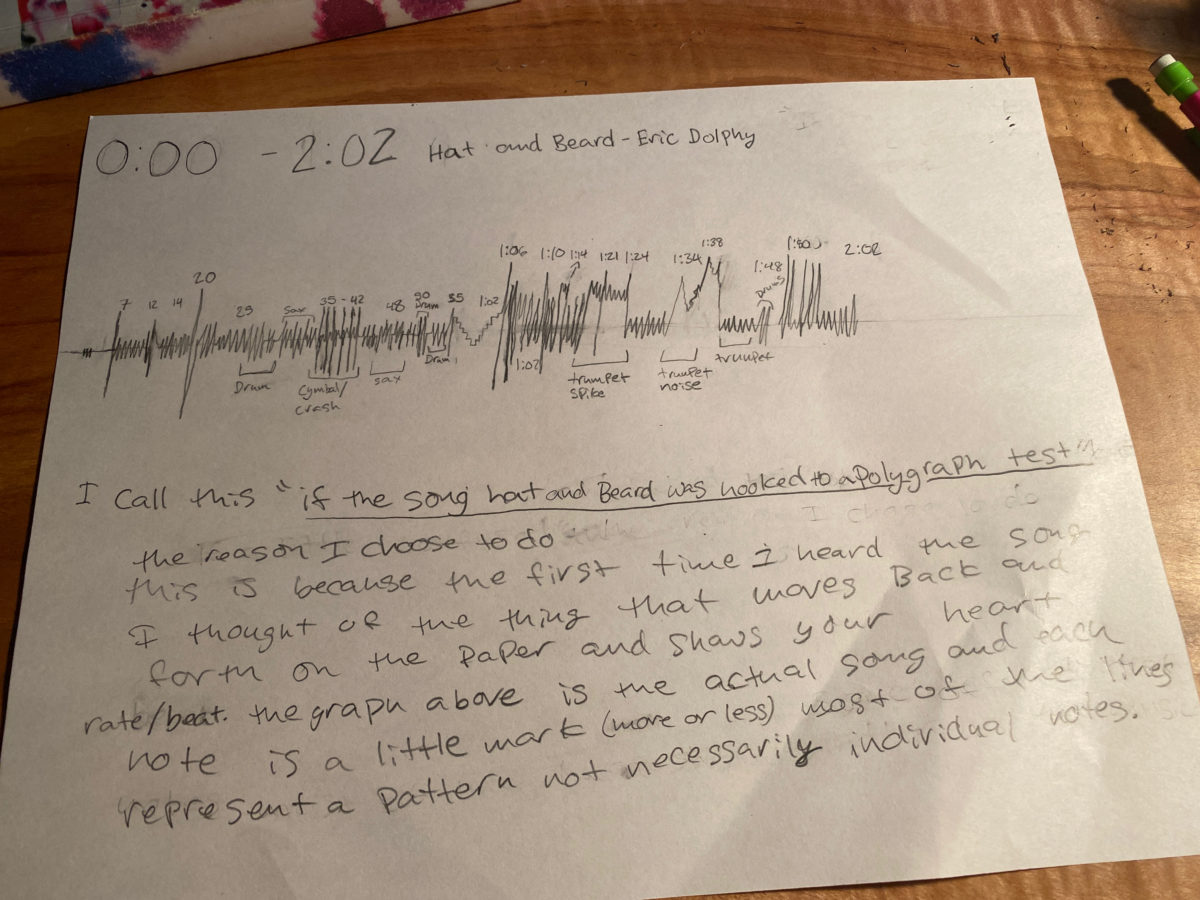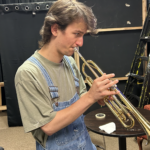The History and Popular Music of the ’60s class learned about Eric Dolphy’s avant-garde jazz album, Out to Lunch! (1964). Here are their reactions.
Conor McGeady:
Out to Lunch! (1964) by Eric Dolphy is a very experimental jazz album. This review is going to be more about technical instrumentation and dynamics rather than the cultural impact, although the album was very important for its time.
Out to Lunch! is full of very technically advanced and intricate instrumentation. Dolphy truly flexed his compositional muscles, using almost all the different types of jazz scales and techniques, as well as phenomenal improvisation during solos by the flautist, the trumpet player, as well as his own alto sax on tracks 4 & 5. Aside from the spectacular melodies and improvisations, the rhythm section of the quintet is also absolutely amazing. The volatility of the drums mix perfectly with the erratic tone of the melody, giving a sense of uncertainty and unpredictability. The piano and bass are solid for holding down the format of the song and giving space for the melody instruments to shine.
This record has a very unstable feel to it. It feels like a train going too fast around a corner on the edge of a cliff, shaking while turning, but still pulls through. The feeling of uncertainty seeps through the instruments in all of the tracks, and it makes for a very interesting but not always enjoyable listen. The reason I say this is because for a lot of people, music is something they use to relax, as a tool for calming down after work or school. This type of music isn’t what you’d listen to during a bus ride or while doing homework, it’s something you’d listen to when you feel like experiencing something new, or challenging your perception of music.
Pritam Khalsa:
Alex Skiles:
This is what I pictured when I listened to Out To Lunch’s zigzagging, interval-ridden melodies, at times an assault on my ears. The short bursts of sound reminded me of a rifle made up of a saxophone, trumpet and a flute. It turned out more cartoonish than I would have liked, but gets the point across I think. I made it using shapes in the Google drawings tool.
Lily Brooks:
Normally when I hear music for the first time, I always picture it in a movie scene or how it can be used in a movie. I don’t really know why. For this response, I wrote two short stories while listening to my favorite songs from the album. I just let the music create the story for me, kind of like what I did with the Mingus response, I really liked how the stories turned out especially because I have never really written short stories before.
“Hat and Beard”
Someone is meeting another person in a secret underground club. They both are wearing tall fedoras and long coats. One lights a cigarette, the other one a cigar. They talk intensely, quietly hushing words at each other while the camera spins around them, implying they are disagreeing about something. One raises his hand and stands up suddenly, pushing his chair to the floor. He raises his voice, the other man matches his level and tone. The camera spins faster around the duo and stops on the man with the lit cigar. He rants about something that seems to interest the man across from him. The man with the cigarette responses, enthusiastic. After sitting down they realize that they would rather drink instead of arguing. The waitress pours them shots as they laugh about their differences. After a few drinks, more than a few, they tire. They make their way to a red sofa where they meet some of their friends. Someone walks in, everyone turns their heads in an instant. He’s wearing a fur coat that touches the ground and sunglasses and a hat that covers half his face. He slowly makes his way down the stairs and to the bar and orders a brown drink. The friends on the couches whisper. They know him, but don’t like him. The tension in the club increases as the man with the almost burnt-out cigar stands, making his way to meet the fur-coated man at the bar. He stands next to him but leaving a good distance between them, maybe six feet. They stand there next to each other, silent. The scene goes dark.
“Straight Up And Down”
The song takes place at the circus. The performers swing from inside the tent as colorful lights flash the arena. Elephants march in a row. A band plays in the background as the head guy steps forward to introduce his performers. With a booming voice, he gestures to his fellow freaks. One man walks up in a tight leotard, bending his body in ways that make him seem like jello. Next, the man who breathes fire comes up, juggling knives and warming the audience from the flames that surround him. Next, the dancing trio runs out into a choreographed dance too complicated to keep up with, but you still can’t take your eyes off it as they jump up and flip into the air. Finally, the aerial dancer drops down on a silk rope, twirling in the air above the other performers, weaving herself in and out of the rope. Eventually, she twirls herself down the floor to meet her other circus misfits. They all do their specialized tricks together in a freestyle frenzy as the audience wails and screams. Finally, the grand finale of the tiger and its tamer is announced. The cage with the furious animal is pulled onto the center of the floor. The audience gasps as the caretaker whips the cage, only making the giant cat angrier. The tamer quiets the audience to hear the growls coming from the cage, teasing to release it. He dances around it, mocking the audience and the giant cat. The cage door opens, and the performer stares at the tiger as it kicks back its feet. End song.
Gibson McCoy:
Sam Swartley:
I made my own arrangement of “Hat and Beard.” The bass/melody really stood out to me. Playing Eric Dolphy’s music really showed how he builds his songs around improvisation, starting with a base idea and seeing where each and every musician will take it.








Leave a Reply